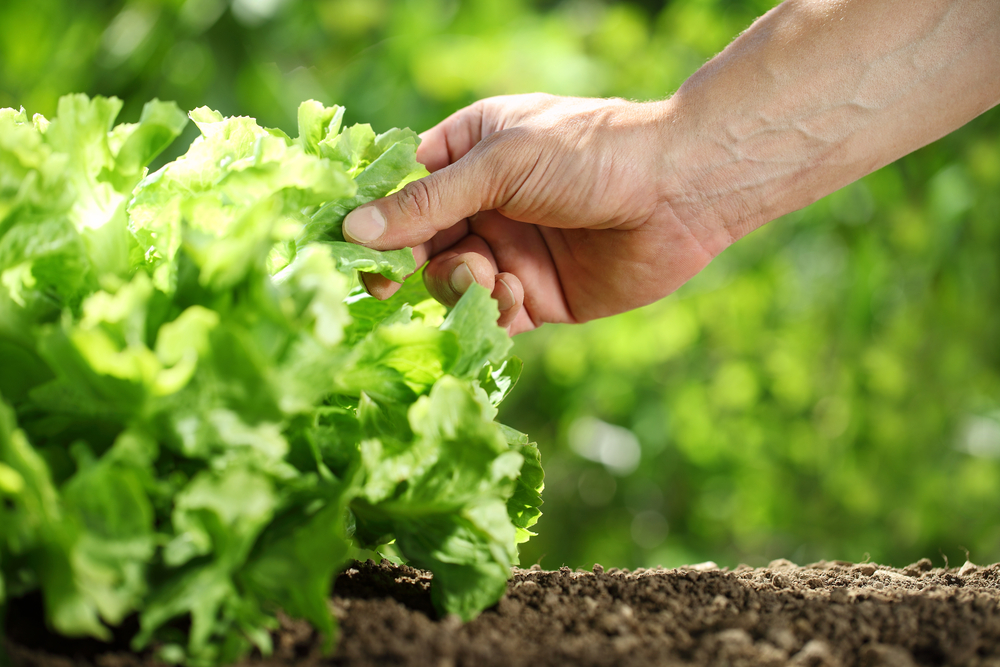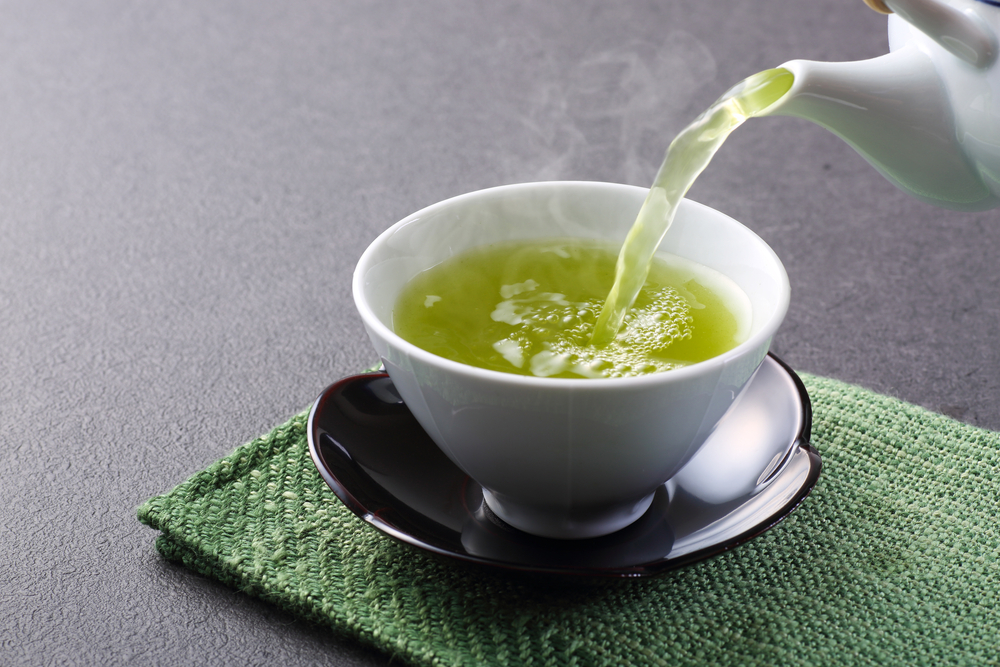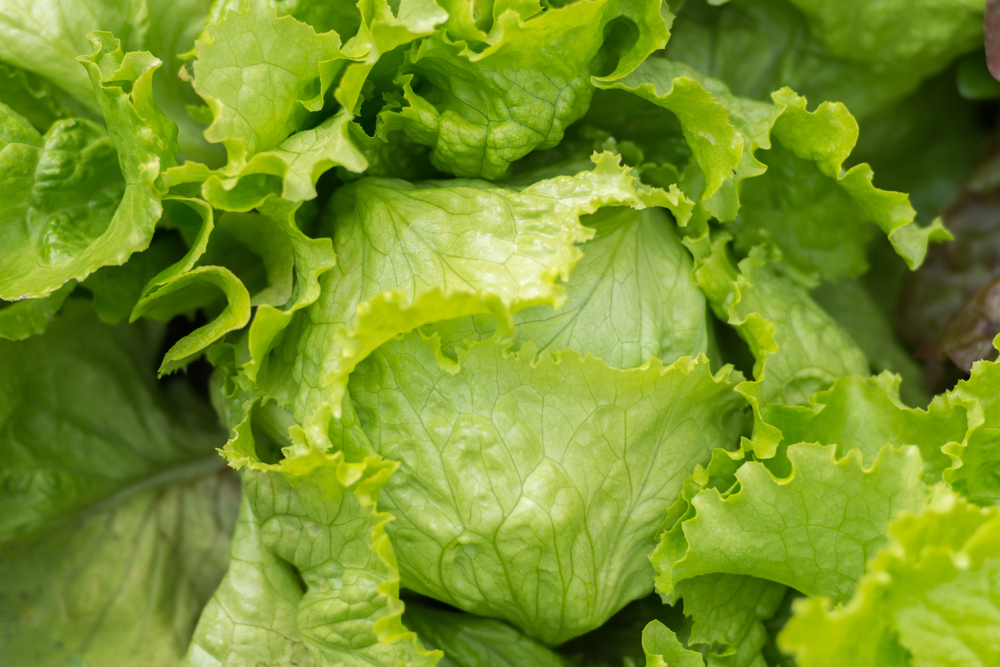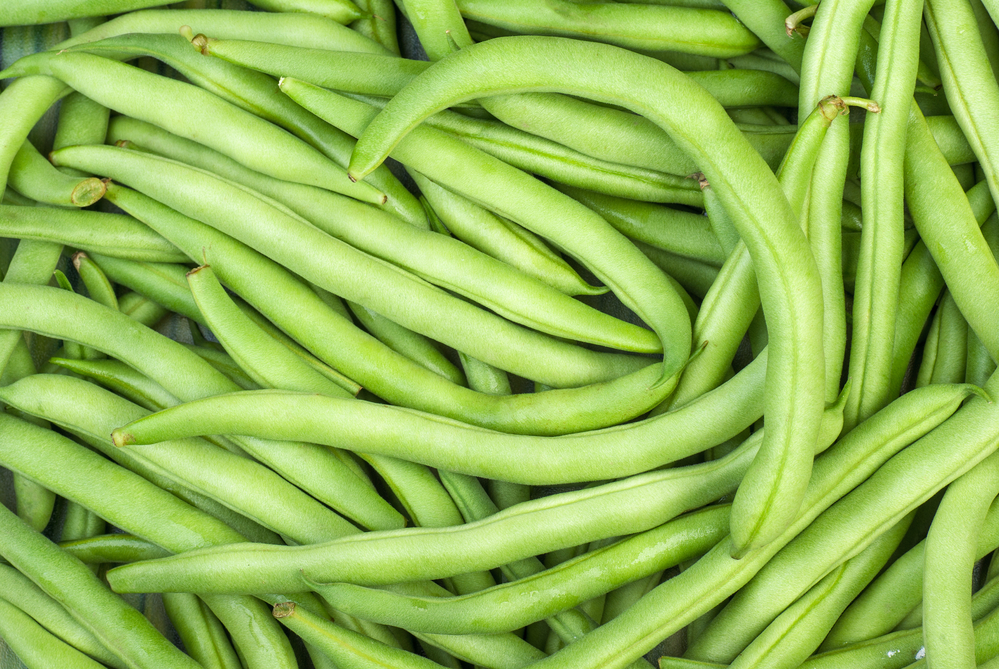Lettuce is a staple in many households, but it can be difficult to know when it’s gone bad. Eating bad lettuce can cause food poisoning, so it’s important to know how to identify when it’s no longer safe to eat.
This article will provide tips and tricks for identifying bad lettuce and understanding its shelf life.
Understanding the different varieties of lettuce is important when trying to determine if it’s gone bad. Head lettuce like iceberg or romaine has a longer shelf life than loose-leaf varieties like butterhead or green leaf lettuce.
Proper storage is also key in extending the life of your lettuce. This article will cover how to properly store lettuce to keep it fresh for as long as possible.
Key Takeaways
- Understanding the different varieties of lettuce and their shelf life is important in identifying when it’s gone bad.
- Proper storage is key in extending the life of your lettuce.
- Sensory indicators like appearance, texture, and smell can help determine if lettuce is no longer safe to eat.
Understanding Lettuce Varieties
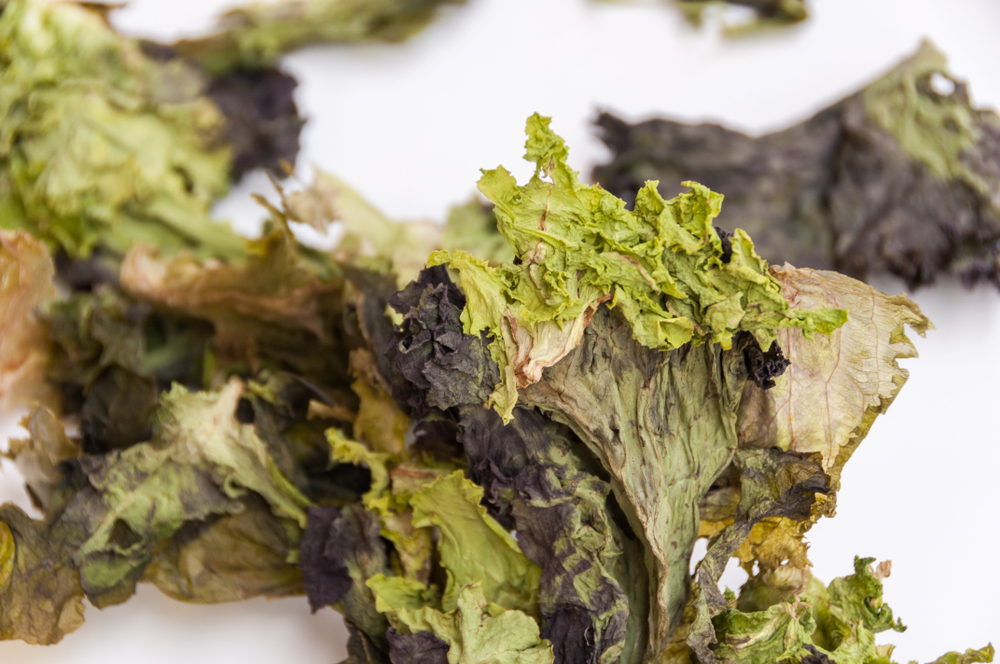
Lettuce is a versatile leafy green vegetable that comes in different varieties. Each type of lettuce has its unique characteristics, including texture, flavor, and nutritional value. Understanding the different types of lettuce can help you choose the best one for your salad or dish.
Romaine Lettuce
Romaine lettuce is a popular variety of lettuce that is known for its crisp texture and slightly bitter taste. It has long, narrow leaves that are green in color and are tightly packed together. Romaine lettuce is a good source of vitamins A, C, and K, as well as folate and fiber.
Butterhead Lettuce
Butterhead lettuce is a type of lettuce that has soft, buttery leaves and a mild flavor. It is also known as bibb lettuce and is often used in salads and sandwiches. Butterhead lettuce is a good source of vitamins A and K.
Iceberg Lettuce
Iceberg lettuce is a type of lettuce that has a crunchy texture and a mild, watery taste. It is often used in salads and sandwiches and is a good source of vitamin K. However, it is not as nutrient-dense as other varieties of lettuce.
Crisphead Lettuce
Crisphead lettuce is a type of lettuce that has a tight, compact head and a crunchy texture. It is also known as iceberg lettuce and is often used in salads and sandwiches. Crisphead lettuce is a good source of vitamin K but is not as nutrient-dense as other varieties of lettuce.
Looseleaf Lettuce
Looseleaf lettuce is a type of lettuce that has loose, curly leaves and a mild flavor. It comes in different colors, including green, red, and purple. Looseleaf lettuce is a good source of vitamins A and K, as well as folate and fiber.
In conclusion, understanding the different types of lettuce can help you choose the best one for your salad or dish. Each variety has its unique characteristics, including texture, flavor, and nutritional value. By incorporating different types of lettuce into your diet, you can enjoy a variety of flavors and nutrients.
Identifying Bad Lettuce

When it comes to identifying bad lettuce, there are a few key signs to look out for. These include brown or black leaves, slimy or soft texture, and a foul odor. Mold and brown spots can also indicate that the lettuce is no longer fresh.
One of the easiest ways to tell if lettuce has gone bad is by looking at the leaves. Normal lettuce is typically a light-green or yellow color, although some varieties have purple leaves. If you notice brown or black spots on the leaves, this is a sign that the lettuce is starting to rot.
Discolorations are very recognizable when they appear, and they can indicate that the lettuce is no longer safe to eat.
Another way to tell if lettuce is bad is by touching it. Fresh lettuce should be crisp and firm to the touch. If the leaves feel slimy or soft, this is a sign that the lettuce is starting to spoil. Similarly, if the lettuce is wilted or limp, this is also an indication that it is no longer fresh.
Finally, smell is another important factor when it comes to identifying bad lettuce. Fresh lettuce should have a slightly sweet smell. If the lettuce smells sour or rotten, it is time to throw it out. Mold and rotten lettuce can also have a strong odor, so be sure to trust your sense of smell when assessing the freshness of your lettuce.
In summary, when it comes to identifying bad lettuce, look out for brown or black leaves, slimy or soft texture, mold, brown spots, a foul odor, and wilted or rotting leaves. By paying attention to these signs, you can ensure that you only consume fresh and safe-to-eat lettuce.
Sensory Indicators of Spoilage
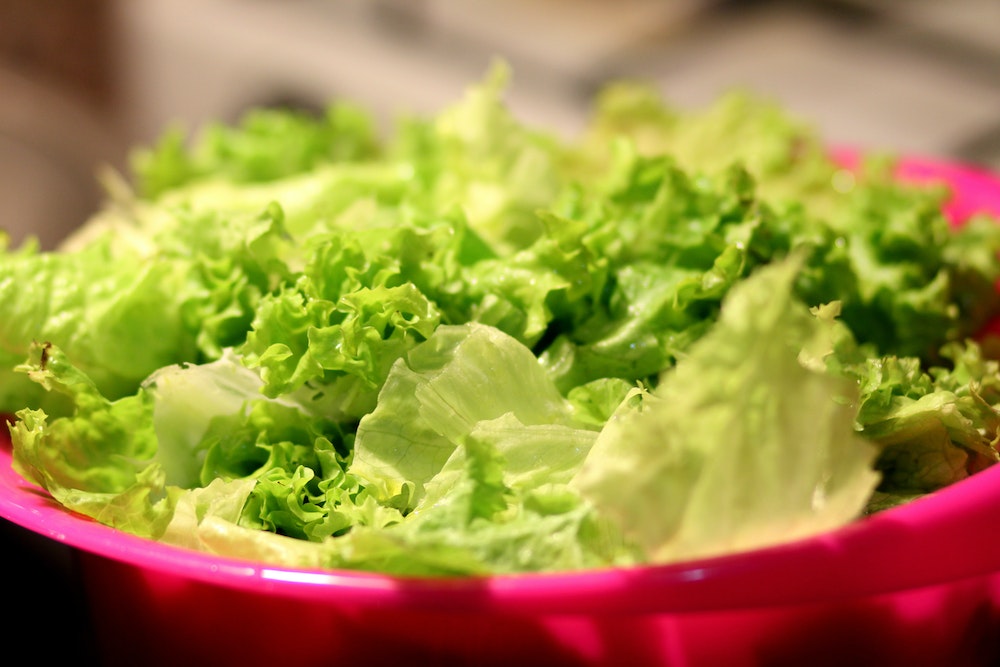
When it comes to determining if lettuce has gone bad, there are several sensory indicators to look out for. These indicators can help you identify if the lettuce is still fresh or if it has started to spoil.
Appearance
The first thing to look for is the appearance of the lettuce. If the lettuce leaves are brown or black, it is an indication that the lettuce has started to rot. Discolorations are easy to spot, and normal lettuce is typically a light-green or yellow color, although some varieties have purple leaves.
Texture
The texture of the lettuce is another indicator of spoilage. Fresh lettuce should be crisp and firm, but if it feels slimy or mushy, it has started to go bad. If the leaves are wilted or limp, it is also a sign that the lettuce is no longer fresh.
Smell
The smell of the lettuce is another way to determine if it has gone bad. Fresh lettuce should have a clean, fresh smell, but if it has a sour or rancid smell, it has started to spoil. If the lettuce smells bad, it is best to throw it away.
Taste
Taking a small bite of the lettuce can also help determine if it has gone bad. If the lettuce tastes sour or has a bad taste, it is no longer fresh and should be discarded.
By paying attention to these sensory indicators, you can determine if your lettuce is still fresh or if it has started to spoil. It is important to always check your lettuce before using it to ensure that you are using fresh and safe produce.
The Role of Appearance and Texture
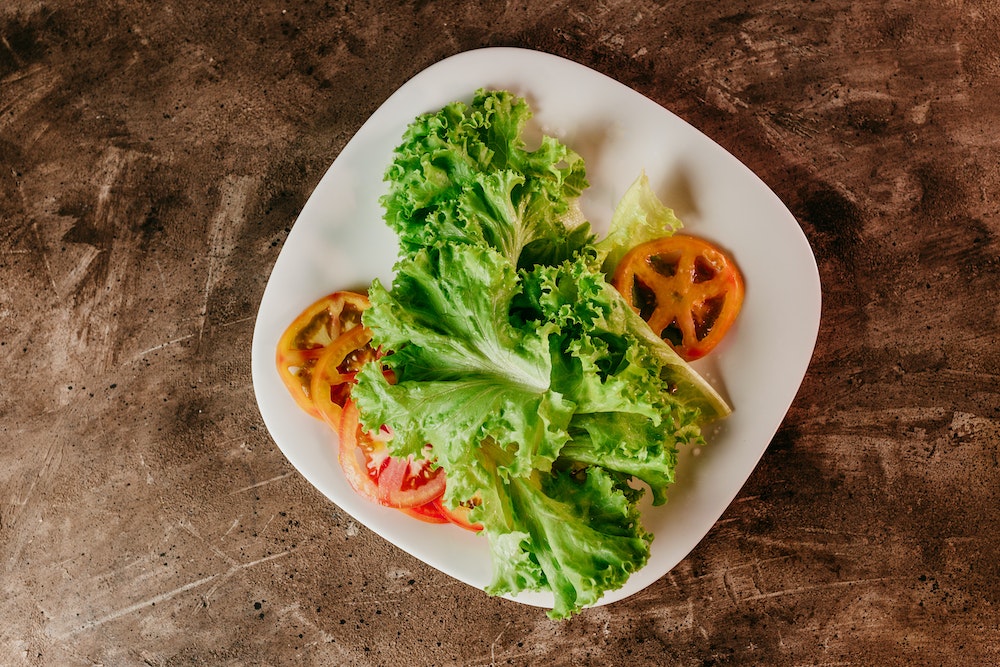
When it comes to determining whether lettuce is bad or not, appearance and texture play a crucial role. Here are some key things to look out for:
Green and Leafy
First and foremost, healthy lettuce should be green and leafy. If the leaves are wilted, yellowing, or browning, it’s a sign that the lettuce is past its prime. However, some varieties of lettuce, such as red lettuce, may have a slightly different coloration, so it’s important to be familiar with the type of lettuce you’re dealing with.
Firm and Crisp
Fresh lettuce should be firm and crisp to the touch. If the leaves are soft or mushy, it’s a sign that the lettuce is starting to spoil. Similarly, if the lettuce feels slimy or wet, it’s a sign that it’s gone bad.
Crunchy
When you bite into a piece of fresh lettuce, it should be crunchy and satisfying. If the lettuce is limp or has a mushy texture in your mouth, it’s a sign that it’s past its prime.
Appearance
In addition to the texture of the lettuce, appearance is also an important factor to consider. If you see any spots of mold or discoloration on the leaves, it’s a sign that the lettuce has started to spoil. Similarly, if the lettuce has a strong or unpleasant odor, it’s a sign that it’s gone bad.
By paying attention to the appearance and texture of your lettuce, you can ensure that you’re only consuming fresh and healthy greens. If you notice any signs of spoilage, it’s best to err on the side of caution and discard the lettuce.
Understanding Lettuce Shelf Life
Lettuce is a popular salad ingredient that is rich in vitamins and minerals. However, it has a relatively short shelf life and can spoil quickly if not stored properly.
Understanding lettuce shelf life is essential to ensure that you are consuming fresh and safe produce.
How Long Does Lettuce Last?
The shelf life of lettuce varies depending on the type and how it is stored. Head lettuce, such as iceberg or romaine, can last for one to three weeks when stored in the refrigerator. Loose leaf lettuce, such as butterhead or green leaf lettuce, has a shorter shelf life and can last for only seven to ten days.
It is important to note that these are general guidelines, and the shelf life of lettuce can vary depending on factors such as the freshness of the produce when purchased, the temperature of the refrigerator, and the humidity level.
Shelf Life of Lettuce
Lettuce has a relatively short shelf life due to its high water content. When stored in the refrigerator, lettuce can lose moisture and become wilted or slimy. To extend the shelf life of lettuce, it is important to store it properly.
Here are some tips for storing lettuce:
- Store lettuce in a plastic bag or container with a lid to keep it from drying out.
- Leave some airflow in the container to prevent excess moisture from accumulating.
- Keep lettuce away from fruits and vegetables that produce ethylene gas, such as apples and bananas, as they can cause lettuce to spoil faster.
- Do not wash lettuce until you are ready to use it, as excess moisture can cause it to spoil faster.
Expiration Date of Lettuce
Lettuce does not have an expiration date, but it is important to check for signs of spoilage before consuming it. Fresh lettuce should have crisp, green leaves and a slightly sweet smell. If the leaves are wilted, slimy, or have a sour or rotten smell, it is best to discard the lettuce.
In summary, understanding lettuce shelf life is essential to ensure that you are consuming fresh and safe produce. By storing lettuce properly and checking for signs of spoilage, you can extend its shelf life and enjoy it for longer.
Proper Storage of Lettuce
Storing lettuce properly is crucial to keeping it fresh and crisp for as long as possible. Here are some tips to help you store your lettuce properly:
- Refrigerate: Lettuce should always be stored in the refrigerator. It is best to keep it in the crisper drawer or vegetable crisper, where the temperature is slightly cooler and more consistent.
- Plastic Bag: To keep your lettuce fresh, store it in a plastic bag. This will help to retain moisture and prevent it from drying out. Make sure to press out as much air as possible before sealing the bag.
- Paper Towels: Another way to keep lettuce fresh is to wrap it in paper towels. The paper towels will absorb any excess moisture and help to prevent the lettuce from wilting.
- Reusable Cloth Produce Bags: If you prefer not to use plastic, try using reusable cloth produce bags. They are a great eco-friendly alternative and will help to keep your lettuce fresh.
- Loose Leaf Lettuce: Loose leaf lettuce can be stored in a container with a lid. Line the container with paper towels to absorb moisture and place the lettuce on top.
- Head Lettuce: If you have a head of lettuce, remove any damaged or wilted leaves and wrap the head in paper towels. Place it in a plastic bag and store it in the refrigerator.
By following these tips, you can ensure that your lettuce stays fresh and crisp for as long as possible. Remember to check your lettuce regularly for any signs of spoilage, such as a sour smell or slimy texture. If you notice any of these signs, it is best to discard the lettuce.
Effects of Ethylene-Producing Fruits
Ethylene is a natural gas that is produced by fruits and vegetables as they ripen. While this gas is necessary for the ripening process, it can also cause other fruits and vegetables to ripen and spoil faster.
Ethylene-producing fruits can have a significant impact on the quality and shelf life of lettuce and other vegetables.
When ethylene-producing fruits are stored near lettuce, the gas can cause the lettuce to wilt, turn yellow, and develop brown spots. This is because ethylene triggers the release of enzymes that break down chlorophyll, which is responsible for the green color of lettuce. As a result, lettuce that is exposed to ethylene-producing fruits may lose its crispness and freshness more quickly.
Some examples of ethylene-producing fruits include apples, bananas, peaches, pears, and tomatoes. On the other hand, lettuce is considered to be a “non-climacteric” fruit, meaning that it does not produce its own ethylene. Instead, it is highly sensitive to the gas and can be easily affected by it.
To prevent ethylene damage to lettuce, it is important to store it away from ethylene-producing fruits. This can be done by keeping lettuce in a separate compartment or drawer in the refrigerator, or by storing it in a sealed container with a paper towel to absorb excess moisture.
In addition to storing lettuce away from ethylene-producing fruits, it is also important to be mindful of the ripeness of other fruits and vegetables in the same area. For example, if a bunch of bananas is starting to turn brown, it is best to move them away from lettuce and other vegetables to prevent ethylene damage.
Overall, the effects of ethylene-producing fruits on lettuce can be significant, but they can be easily prevented by taking the necessary precautions.
By storing lettuce away from ethylene-producing fruits and being mindful of the ripeness of other fruits and vegetables, it is possible to extend the shelf life of lettuce and keep it fresh for longer.
Health Risks Associated with Bad Lettuce
Consuming bad lettuce can lead to food poisoning, which is caused by harmful germs such as E. coli, norovirus, Salmonella, Listeria, and Cyclospora.
While anyone can get a foodborne illness, some groups of people are more likely to get one and to have a serious illness. These groups include adults aged 65 and older and children younger than 5 years.
Symptoms of food poisoning can range from mild to severe and can include nausea, vomiting, diarrhea, abdominal pain, and fever. In some cases, food poisoning can lead to dehydration, kidney failure, and even death.
It’s important to note that even if the lettuce looks and smells fine, it can still be contaminated with harmful germs that can cause food poisoning. Therefore, it’s crucial to properly store and handle lettuce to prevent the growth of these harmful germs.
To reduce the risk of food poisoning from lettuce, it’s recommended to wash it thoroughly before consuming it. Soaking the lettuce in a vinegar and water solution for about 10 minutes, then rinsing it with water, may also help reduce the risk of contamination.
In conclusion, it’s essential to be aware of the health risks associated with bad lettuce and to take proper precautions to prevent food poisoning. By properly storing and handling lettuce and washing it thoroughly before consuming it, you can reduce the risk of foodborne illness.
Lettuce in Different Meals
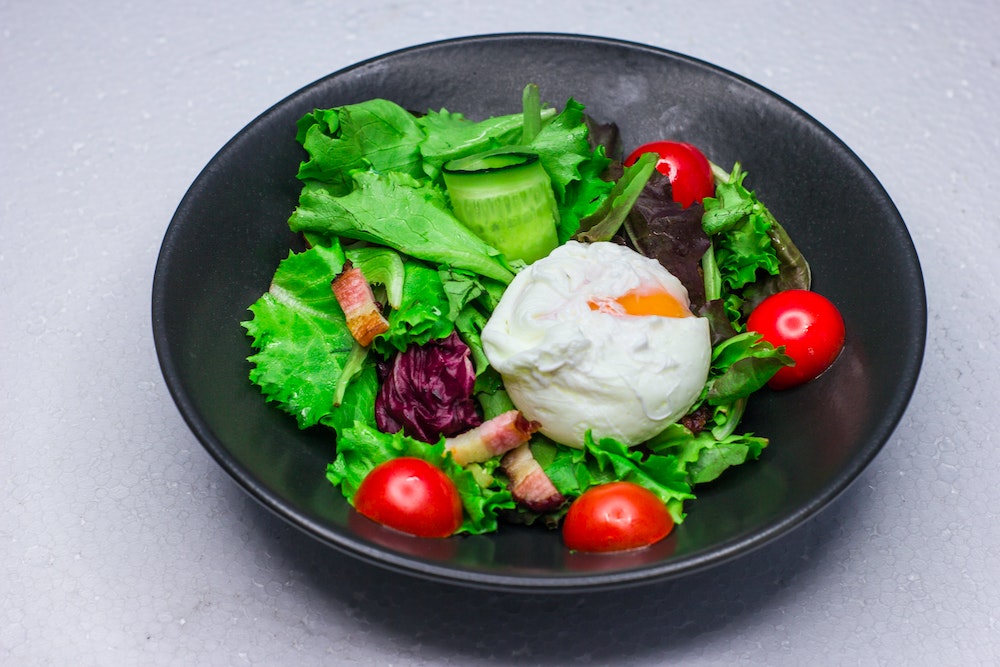
Lettuce is a versatile ingredient that can be used in a variety of meals, including salads, sandwiches, and soups. Here are some tips on how to incorporate lettuce into different dishes:
Salads
Lettuce is a staple ingredient in salads and can be used as a base for a variety of toppings. When making a salad, it is important to choose fresh lettuce that is not wilted or brown. To ensure that the lettuce stays fresh, it is recommended to wash and dry it thoroughly before adding it to the salad.
Some popular types of lettuce that are used in salads include:
- Romaine lettuce
- Iceberg lettuce
- Arugula
- Spinach
- Mixed greens
To add some variety to your salad, you can also add other vegetables such as tomatoes, cucumbers, and carrots. For a protein boost, you can add grilled chicken, tofu, or hard-boiled eggs.
Sandwiches
Lettuce is a great addition to sandwiches as it adds a crisp texture and a fresh flavor. When adding lettuce to a sandwich, it is important to choose a sturdy type of lettuce that will not wilt or become soggy. Some popular types of lettuce that are used in sandwiches include:
- Romaine lettuce
- Iceberg lettuce
- Butter lettuce
- Spinach
To add some variety to your sandwich, you can also add other vegetables such as tomatoes, onions, and peppers. For a protein boost, you can add deli meat, cheese, or hummus.
Soups
Lettuce can also be used in soups to add a fresh flavor and a pop of color. When adding lettuce to a soup, it is important to add it towards the end of the cooking process to prevent it from becoming too wilted. Some popular types of lettuce that are used in soups include:
- Butter lettuce
- Romaine lettuce
- Spinach
To add some variety to your soup, you can also add other vegetables such as carrots, celery, and onions. For a protein boost, you can add beans, lentils, or chicken.
Overall, lettuce is a versatile ingredient that can be used in a variety of meals. By choosing fresh lettuce and incorporating it into different dishes, you can add a healthy and flavorful element to your meals.
Washing and Preparing Lettuce
When it comes to washing and preparing lettuce, there are a few things to keep in mind to ensure that it is safe to eat. Whether you are using prewashed lettuce or washing it yourself, the following tips will help you prepare your lettuce properly:
- Wash all lettuce thoroughly, even if it is prewashed. The Food and Drug Administration (FDA) recommends washing all produce to reduce the risk of foodborne illness. Prewashed lettuce has been washed once, but it is still a good idea to wash it again before eating.
- Fill a large bowl with cold water and add the lettuce. Swirl the lettuce around in the water to remove any dirt or debris. If the lettuce is particularly dirty, you may need to repeat this step.
- Remove the lettuce from the water and shake off any excess water. Place the lettuce in a salad spinner or on a clean kitchen towel and pat it dry.
- If you are using a salad spinner, spin the lettuce until it is dry. If you are using a kitchen towel, gently pat the lettuce dry with the towel.
- Store the lettuce in an airtight container or resealable bag in the refrigerator until you are ready to use it.
It is important to note that while washing lettuce can help remove dirt and debris, it cannot remove all harmful bacteria. To reduce the risk of foodborne illness, it is important to handle all produce safely and cook meat and poultry to the appropriate temperature.
Freezing Lettuce
Lettuce can be frozen, but it is not recommended as it can become mushy and lose its texture. However, if you have a surplus of lettuce and do not want it to go to waste, freezing it can be an option. Here are some tips to help you freeze lettuce:
- Choose lettuce with thicker leaves as they tend to freeze better than thinner leaves.
- Separate the leaves and wash them thoroughly.
- Dry the leaves completely before freezing them.
- Place the dry leaves in a freezer-safe bag or container.
- Label the bag or container with the date and type of lettuce.
- Place the bag or container in the freezer.
When you are ready to use the frozen lettuce, remove it from the freezer and let it thaw in the refrigerator. Once it is thawed, use it in recipes that call for cooked lettuce, such as soups or stir-fries, as the texture will not be the same as fresh lettuce.
It is important to note that not all types of lettuce freeze well. Iceberg lettuce, for example, does not freeze well due to its high water content. Other types of lettuce that freeze well include romaine, green leaf, and red leaf lettuce.
Overall, freezing lettuce is not the best option, but it can be done if you have no other choice. If you have a surplus of lettuce, it is recommended to use it up in salads or other fresh dishes before it goes bad.
Nutritional Value of Lettuce
Lettuce is a low-calorie, low-fat, and low-carbohydrate vegetable that is rich in nutrients. It is an excellent source of vitamins A and K, and it also contains vitamin C, folate, and iron. It is also high in water content, making it a great hydrating food.
Here is a table outlining the nutritional content of one cup of shredded lettuce:
| Nutrient | Amount |
|---|---|
| Calories | 5 |
| Fat | 0.1 g |
| Carbohydrates | 1 g |
| Fiber | 0.5 g |
| Protein | 0.5 g |
| Vitamin A | 148 mcg (16% DV) |
| Vitamin C | 3.5 mg (4% DV) |
| Vitamin K | 34.8 mcg (29% DV) |
| Folate | 17.6 mcg (4% DV) |
| Iron | 0.3 mg (2% DV) |
As you can see, lettuce is not a significant source of most nutrients, but it does provide a good amount of vitamin A and vitamin K. Vitamin A is important for maintaining healthy vision, while vitamin K is essential for blood clotting and bone health.
Lettuce also contains small amounts of iron, which is necessary for the production of hemoglobin in red blood cells. However, the iron in lettuce is not as easily absorbed by the body as the iron in meat or fortified grains.
Overall, lettuce is a nutritious vegetable that can be a healthy addition to any diet.
Conclusion
In conclusion, it is important to know how to identify bad lettuce to avoid consuming spoiled or contaminated food. When inspecting lettuce, look for signs of discoloration, wilting, and sliminess, as well as any foul odors.
Remember that different types of lettuce have varying shelf lives, so it is important to use them as soon as possible. Additionally, proper storage can help extend the life of lettuce. Consider storing lettuce in a plastic bag or container with a damp paper towel to maintain moisture levels.
To recap, here are some key takeaways to keep in mind when determining if lettuce is bad:
- Look for brown or black leaves, wilting, and sliminess
- Trust your sense of smell – if it smells off, it probably is
- Use lettuce as soon as possible, as it has a short shelf life
- Store lettuce properly to maintain freshness and extend its life
By following these tips, you can ensure that the lettuce you consume is fresh and safe to eat.
Related posts:
Frequently Asked Questions
How can you tell if lettuce has gone bad?
There are a few ways to tell if lettuce has gone bad. First, look for discoloration or brown/black leaves, which indicate that the lettuce is rotting. Second, check for a slimy or mushy texture, as this can also be a sign of spoilage. Finally, give the lettuce a sniff. If it smells musty or off, it’s best to discard it.
What are the signs of spoiled lettuce?
The signs of spoiled lettuce include discoloration, slimy/mushy texture, and a musty or off smell. Additionally, lettuce that has been sitting in the fridge for too long may start to wilt or become limp.
How long does lettuce typically last in the fridge?
The lifespan of lettuce in the fridge can vary depending on the type of lettuce and how it is stored. Generally, lettuce can last anywhere from 3-7 days in the fridge. To help extend its lifespan, store lettuce in an airtight container or plastic bag with a paper towel to absorb excess moisture.
Is it safe to eat lettuce that is slightly brown?
While slightly brown lettuce may not necessarily be harmful, it’s best to err on the side of caution and discard it. Brown spots can be a sign of spoilage or decay, and they may also affect the taste and texture of the lettuce.
Can you eat lettuce that smells weird but looks okay?
If lettuce smells off or musty, it’s best to discard it. Even if it looks okay, a strange smell can be a sign of spoilage or bacterial growth.
What does yellowing lettuce indicate about its freshness?
Yellowing lettuce is a sign that the lettuce is starting to wilt or go bad. While it may still be safe to eat, it may not be as fresh or flavorful as crisp, green lettuce.


